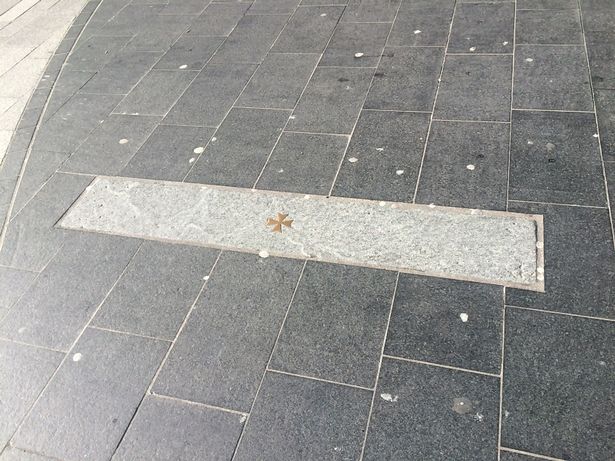Few notice it, and even fewer realise it marks a quiet reminder of one of Liverpool city centre’s most significant lost landmarks Church Street shoppers in Liverpool city centre(Image: Colin Lane/Liverpool Echo)
Church Street shoppers in Liverpool city centre(Image: Colin Lane/Liverpool Echo)
Tens of thousands of people walk down Church Street every single day – shoppers, commuters, tourists and buskers – most of them focused on the shop windows or the route to Liverpool ONE just beyond. But right beneath their feet, hidden in plain sight, lies a small brass Maltese cross embedded in the pavement. Few notice it, and even fewer realise it marks a quiet reminder of one of Liverpool city centre’s most significant lost landmarks.
Before Church Street became the bustling shopping street it is today, it was home to St Peter’s Church, a grand 18th-century building that once dominated the area. The church gave Church Street its name and, for nearly 200 years, stood at the heart of Liverpool’s Anglican community. Its presence defined the street long before the modern-day crowds arrived.
St Peter’s was demolished in 1922, and almost nothing of it remains visible today.
Except, that is, for the small brass cross still set into the street.
The cross lies just outside Key’s Court, quietly sitting in the paving as people hurry past without a second glance.
It’s often said the cross marks the exact position of the church’s altar, but that’s not entirely true.
In reality, the cross was first embedded in a kerbstone soon after the church was pulled down, before the street was pedestrianised.
 The cross marking the site of St Peter’s Church in Church Street(Image: Sunday Echo)
The cross marking the site of St Peter’s Church in Church Street(Image: Sunday Echo)
It has probably been moved around more than once over the years as Church Street has been repaved and redeveloped.
Even so, the cross still lies within the boundaries of the old churchyard, and not far from one of the entrances to St Peter’s.
Fittingly, the brass itself has a direct connection to the church – it was made from the melted-down altar rail of St Peter’s after the demolition.
Another subtle clue to the area’s past can be seen just above the entrance to Key’s Court, where two carved keys pay tribute to St Peter, whose symbol is the crossed keys.
Together, the cross and the carving serve as faint reminders of a church that once dominated the street that still bears its name.
Today, as shoppers and visitors stream past, few stop to notice the small glint of brass beneath their feet – a quiet trace of faith and history in the middle of Liverpool’s busiest shopping street.
